Madagascar has a hi-tech waterless toilet that charges your phone
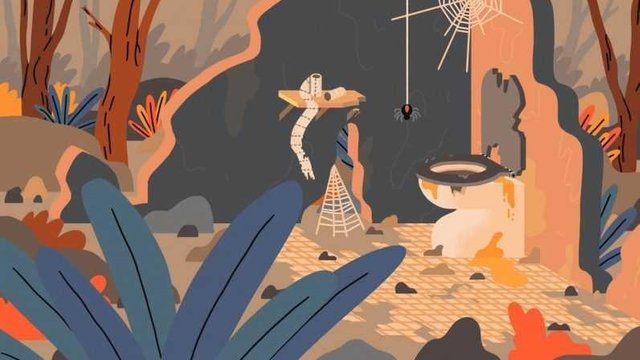
Traditional flush toilets aren’t an option in many parts of the world, but neither is leaving people with unsafe and unhygenic choices. Now, one company is piloting a new loo that’s waterless, off-grid and able to charge your phone. Lina Zeldovich travels to Madagascar to witness the start of a lavatorial revolution.
Inside a wooden shack behind her, Rartjarasoaniony’s elderly mother greets customers through a small window that overlooks the narrow, unpaved neighbourhood street. That’s Rartjarasoaniony’s shop, in which she sells a bit of everything, kitchen sponges, eggs laid by her hens and freshly brewed coffee, which she hands out to customers in small metal cups, rinsed in a bucket of water from a communal pump.
As she describes her new toilet in the soft Malagasy language – and Loowatt’s manager Anselme Andriamahavita translates – I discern the word tsara in the string of unfamiliar sounds. By now I’ve learned that tsara means ‘well’, as in wellbeing and healthy. Rartjarasoaniony switched to the new toilet because it’s cleaner and safer than her outhouse. “My family of four uses it, and so do my three tenants who rent the next house over – it’s included in the rent,” she says. “Even my son can use it,” she adds, echoing worries of all Malagasy mothers, terrified that their young children may one day fall into a pit and literally drown in shit.
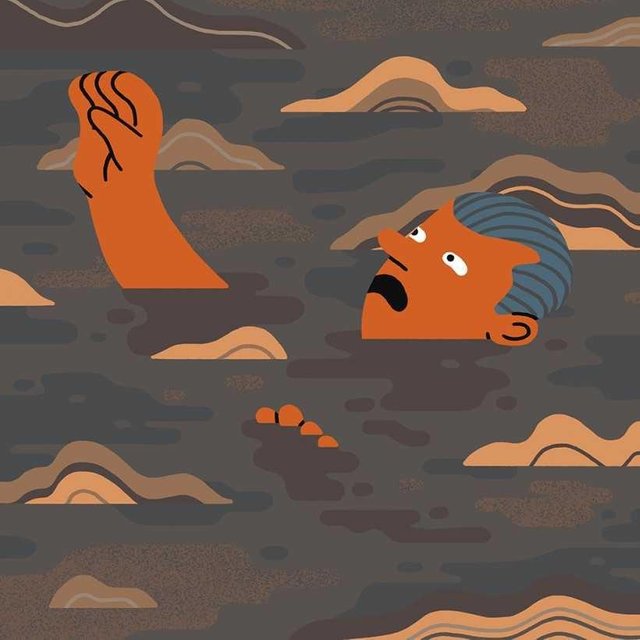
Like most Madagascan residents, Rartjarasoaniony and her tenants don’t have modern sanitation systems in their homes, which are built with bricks hand-made from red Madagascan mud. While cell phones are ubiquitous in Antananarivo, flush toilets are not. Most people use ‘Malagasy toilets’, meaning outhouses. Out in the country, some villagers don’t even have those – when nature calls, they head to the bushes or into the fields. The more sophisticated Malagasies who do own latrines call it ‘going au natural’.
But latrines aren’t a hygienic solution either, and not only because they smell and are hard to keep clean. Madagascar has so much groundwater that many Antananarivo residents grow rice in their yards. When torrential rains hit, everything floods. The waste from latrines rises and floats into the yards, houses, shops, and streets. The threat is very real. In a neighbor’s latrine across the street, the sordid grey goo almost reaches the pit’s surface, a clear menace comes the next storm. “When we used the pit latrine before, and it rained, sometimes the water would come out,” Rartjarasoaniony tells me. “And we were afraid of getting sick because of the filth.”
Lack of toilets is not a problem unique to Madagascar. The World Health Organization (WHO) estimates that 2.4 billion people lack access to basic toilet facilities, and nearly 1bn can’t even do their business in private, practicing so-called ‘open defecation’, resorting to fields, street gutters or creeks. Many countries, primarily in sub-Saharan Africa and South Asia, face similar sanitation challenges, says Francis de los Reyes at North Carolina State University, who designs sanitation management solutions for developing counties.
In many places building a flushing toilet system, as we know it, is nearly impossible. Some places simply don’t have enough water. Some have too much, which complicates water treatment processes because of floods and overflows. Others don’t have the means to build the water-based infrastructure. That’s why Loowatt, a London-based startup, came up with a radically different flushing solution – one that doesn’t use water at all.
In Loowatt’s waterless flush design, the waste is sealed into a biodegradable bag underneath the toilet with not a drop of water being spilled. Once full, the bag is replaced by a service team, and the waste is brought (yes, hand-delivered) to Loowatt’s pilot waste-processing facility, where it’s converted to fertiliser and biogas.

This very manual setup sounds very archaic compared to the slick and convenient arrangements of the Western world. But sanitation experts think that in the era of climate change, when droughts and floods are becoming increasingly common, the West may have something to learn from the little waterless loos piloted in penniless Madagascan neighbourhoods. With the world’s population ever-increasing, places that historically relied on water for sanitation may have to reconsider how they flush.
A whole new loo
Loowatt’s London-based founder and CEO Virginia Gardiner never thought she’d end up designing 21st-century toilets. When she graduated from Stanford University in 1999 with a bachelor’s degree in comparative literature, she couldn’t have been further removed from the engineering challenges of processing human waste. But then she went to work as a reporter for an architecture and design magazine, Dwell, covering industry events. One of the things that struck her was that architectural concepts evolved constantly, except for toilets, which seemed to remain the same for ever.
When Gardiner did her Master’s thesis at the Royal College of Art in London, she chose to focus it on a waterless toilet system. In 2010, she founded Loowatt and ran a money-raising campaign based around turning “shit” into a commodity. When in 2011 the Bill & Melinda Gates Foundation issued the Reinvent the Toilet Challenge to devise sustainable sanitation technologies to handle the number one (and, well, the number two) of humankind’s basic necessities, the requirements matched Gardiner’s waterless design. She applied for the grant and got it.
The project killed two birds with one stone – giving people a toilet, and converting their waste to biogas, generating enough electricity to charge cellphones. When that proof of concept worked, Loowatt scaled up to its current size – 100 toilets serving about 800 customers.
In their basic appearance, Loowatt toilets don’t look much different from our Western johns, with their plastic seats and flushing handles, which come in the form of a pedal or a rope you pull. But instead of releasing a swirl of water into the basin, this move activates the white biodegradable film that envelopes and seals the waste, pushing it into a collector underneath the toilet, all odor-free. Loowatt’s service team replaces the biodegradable bag once a week, or more often if it fills up sooner.
Equipped with a small pushcart and collection bins, a two-person team conducts daily walks through the neighborhood, gathering waste bags and doing repairs. The residents can also request service by text message when the bag fills up or if something breaks.
The Loowatt setup isn’t free – residents pay about £12 as a deposit for a toilet (which remains Loowatt’s property) and about £3 a month for service. For Madagascar, where some families exist on £1 a day, this isn’t cheap. But Rartjarasoaniony tells me she finds it acceptable. Maintaining a latrine costs more. “We have to empty it every six months, and it is really expensive,” she explains, not to mention the unsightly mess it creates. The manual process is done by ‘informal emptiers’ – usually men who show up with buckets to chug the goo into containers, dropping splotches of repugnant gunk around the yard for her egg-laying hens to peck at.
Standing behind Loowatt’s technician Edonal Razanadrakoto, I watch him tinker with Rartjarasoaniony’s toilet flushing mechanism. “In the older version of the toilet you had to push a pedal to make the bag seal the waste,” he explains, pointing at the plastic cogs and wheels. That mechanism ultimately relied on an internal rope, which often jammed and tore, so Loowatt switched to a sturdier, hand-pulled device, and now the toilets have to be upgraded. While Razanadrakoto changes the part, his coworker stashes the waste bag from underneath the toilet into a white bin on his pushcart and taps on the phone to update Loowatt’s online monitoring system: bag removed.As Razafindeamiza explains her ordeals with the Malagasy way of using the toilet, a range of expressions crosses her face, from embarrassment to disgust. She works for the Ministry of Health, Andriamahavita explains, and really hates the unsanitary side of it all. A renter who moved here recently, she had to share an outhouse with several neighbors, some of whom didn’t clean up after themselves, leaving it unusable.
It was also too far from her house, which made things difficult. “If diarrhea comes up at night, I’m afraid to go there,” she says. “Sometimes you would go there and it would be really dirty and you’d have to clean it before you could use it.” Electricity isn’t always available in Antananarivo either, so imagine doing all that in the dark. “With this toilet I feel safe and secure,” she adds.
Later, as Andriamahavita is driving us from Loowatt’s pilot neighborhood to the main office, I can’t help but ask: “Gloria works for the Ministry of Health, and her house looks rather nice, so why can’t she afford a home with a better toilet?”
“A government job doesn’t necessarily pay a lot of money,” Andriamahavita explains, but the biggest problem is the infrastructure. “We don’t really have a sewage system like in the Occident.” Middle-class Malagasies can afford certain life perks, like a TV, a stereo system, a smartphone, even a second-hand car. But a flush toilet isn’t something an individual’s money can buy.
It takes the entirety of society to make sanitation work – an individual cannot master that challenge alone. Canadian epidemiologist David Waltner-Toews, author of The Origin of Feces, says it’s because humans have a very complicated relationship with their own waste.
A brief history of toilets
A pile of shit begins to endanger humans almost immediately. Attracted to the nutrients inside that pile – phosphorous, nitrogen and undigested proteins – pathogens swarm in. Some feed on it, others lay eggs. To stay healthy, we must keep the poo, which we produce regularly, as far away from ourselves as possible.
When people began to move into cities, space became scarce and waste disposal got ugly. Waltner-Toews says that in medieval Europe people emptied their chamber pots out the window. But generally, crowded living conditions prompted humans to become more creative in getting the unwanted matter out of sight and out of mind
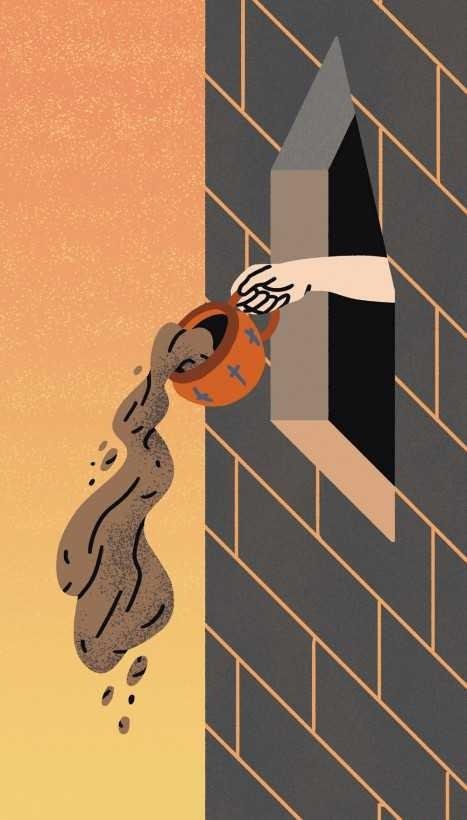
The ‘downstream’ approach was often the method of choice. Ancient Romans built communal bathrooms with rows of thrones akin to ours, only rather than commenting on Facebook posts, the toilet-goers probably discussed matters sitting next to each other, butt to butt; meanwhile the waste would fall into a gutter with continuously flowing water that carried it outside of the city walls by way of simple sewage routes.
European noblemen built ‘garderobes’ in their castles – rooms with stone or wooden benches with holes in them, through which the excrement would fall, down chutes and into the moat. (While masters used the facilities, the servants guarded their elaborate robes, apparently coining the term garderobe, as historian Dan Snow explains.)
The Industrial Revolution and urban development locked the process of excrement removal into pipes and treatment plants, which treated sewage to levels that made it safe enough to release back into the world. That worked well for the 19th and 20th centuries, Waltner-Toews says, but rather than truly solving the problem, it scaled it to an industrial size. Treatment plants rely on a steady supply of water, which is not universal. The plants don’t recover enough nutrients from the sludge, so leftover phosphorus and nitrogen trickles into the water, helping to cause algal blooms. The ‘downstream’ solution just doesn’t work on a crowded planet, Waltner-Toews says. “In the 21st century, everybody is downstream from somebody else.”
For all these reasons, the Gates Foundation issued their Reinvent the Toilet Challenge, which called for more than just a clean removal of waste. Toilets of the future should recover ‘valuable resources’ from the waste, namely energy, nutrients and clean water. They must operate off the grid, without access to water, electricity or sewage plants, and fit into poor urban settings. And yet, they should be attractive enough for the high-income world to use.
Sanitation is such a hot issue that there’s now an international conference in fecal sludge management, or FSM, aimed at keeping the world clean of the crap humans produce. And for good reason – without an organized waste-disposal system, society is basically doomed to languish in poverty and disease.

Open defecation, for example, is dangerous for several reasons. One is that woods and fields can be unsafe, especially in the dark and especially for women and children, because of everything from crime to poisonous snakes. But the other problem is that it creates huge health hazards.
When fecal matter makes it into drinking water, it spreads cholera, dysentery, and even polio, continuing the cycle of disease and poverty. The toll on human health is enormous. According to 2016 numbers from the WHO, about 842,000 people in low- and middle-income countries die every year from poor water, sanitation, and hygiene.
Building designated waste repositories like latrines don’t make waste disappear either. Where space is plenty, people can just close off a full latrine and dig another hole. But when space is tight, like in crowded Antananarivo, where families are forced to share latrines, someone has to take out the trash. In Madagascar it’s usually men equipped with buckets. In Ethiopia it’s also men, who pour kerosene onto the waste to mask the smell and drink heavily before descending into the pit to dull their senses. But in India it’s often women of the lowest caste, the Dalits, who empty the pits – by scooping the waste into woven baskets, which they carry away on their heads, teaching their young daughters to do it too
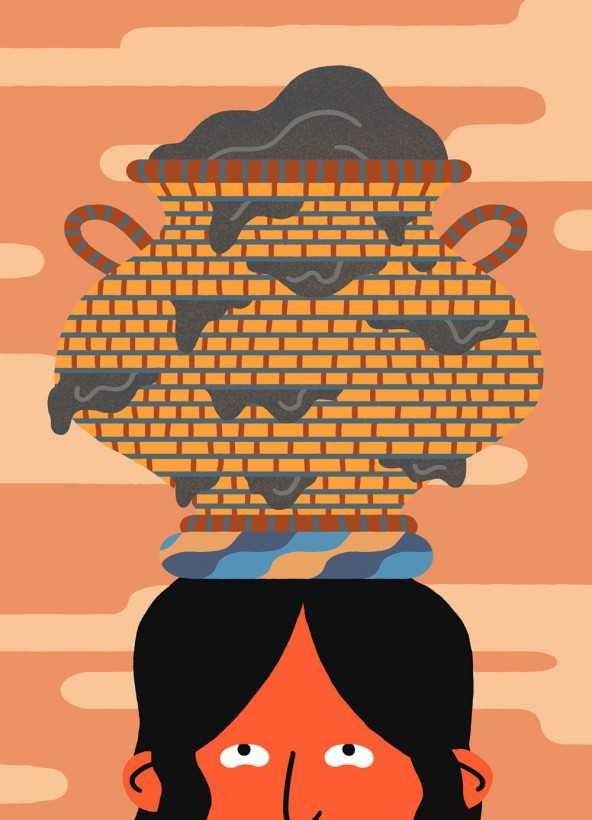
The amount of pathogens that can dwell in that sludge is mind-boggling: those responsible for hepatitis A and B, cholera, campylobacter, dysentery, and salmonella, plus intestinal worms that you don’t even have to ingest to get sick – you can inhale them. From research samples taken from latrines all over the world, de los Reyes has seen all of that and more. He has been vaccinated and routinely takes a de-worming pill after gathering samples, just to be on the safe side. But most people who empty latrines, or have their latrines emptied and have droppings left in their yards, don’t have access to de-worming pills, and many don’t have the immunizations either.
Even when there is a public sanitation system, fecal sludge is often not treated to the appropriate standards before it is put back into the environment. In Dhaka, Bangladesh, only 2 percent is treated acceptably, the rest just gets dumped out there, de los Reyes says.
Giving every teenager a phone is easy, in the sense that cell towers are fairly simple to install. But processing poo is a much stickier problem. To shape shit into something harmless and useful takes a very concentrated effort.
Hyperlocal poo processing:
Nestling on a cliff overlooking mud houses and mango trees, the site occupies around 400 square meters and consists of a series of tanks linked by numerous pipes. At the system’s heart is the biodigester – a tank of nearly 30 cubic meters that converts poo produced by 800 or so people into about six tonnes of liquid fertilizer a month, sold to farmers. Three tons are sold as liquid fertilizer, with the remaining three being turned into one tonne of compost and 500 kg of vermicompost – nutrient-rich natural fertilizer chewed through by earthworms. Diversifying fertilizer products helps sell them, says Armel Segretain, a Loowatt engineer who moved from London to Antananarivo to oversee the implementation of the new sanitation model.
Compared to Western industrial treatment plants, this pilot operation is tiny, but its waterless setup significantly reduces the amount of sludge it must process. It also works on different chemical and biological principles than most Western plants.
In established industrial sanitation systems, water constitutes about 95 percent of the overall sewage mass. This waste must be filtered and purified with chemicals before being released back into the environment. Then they treat the remaining biosolids, Segretain explains. But Loowatt toilets produce much less fluid. Another big difference is that Loowatt adds food leftovers to the process, which industrial treatment sites don’t do.
And, the majority of industrial treatment plants use an aerobic process, pumping oxygen through the fecal sludge to support the bacteria that eat it. These bacteria emit carbon dioxide, a greenhouse gas. Loowatt instead uses anaerobic digestion – processing waste with bacteria that don’t use oxygen and produce methane, or biogas, which can be used as an energy source. Some carbon dioxide is still released but in smaller amounts. “We have about 35 percent of carbon dioxide in the gas we produce and 65 percent methane,” Segretain says. A good ratio, he adds.
Just as with collecting it, loading waste into the digester is a manual task. Inside the contaminated chamber, Andriambololona loads white bags into a poo-extraction machine. I prepare to hold my nose, but the rambling apparatus lets out surprisingly little odor. Outside, hiding from the blistering sun in a shady spot, two workers load food leftovers brought from local restaurants into a machine that resembles an oversized meat grinder. It works like one too, slowly mushing rice and veggie bits into a soppy slush that drips into a bucket in grey soggy glops.
The poo and slush are then loaded into a pre-digester tank and heated to 70°C to kill pathogens. To comply with Gates Foundation requirements, the pre-digester relies on self-generated energy – the hot water used in the heating is itself heated by the biogas the system produces. The pasteurized matter is then pumped into the biodigester. It’s covered with a huge inflatable bag that collects the methane released. As the gas builds up, the bag floats up in the air, like an enormous balloon. When the bag is full, it’s actually larger than the digester itself, Andriambololona says.
To make the manual waste collection work, Andriamahavita tells me, the digester site had to be ‘hyperlocal’ – very close to the neighborhood where the toilets were installed, which was hard, as space is a real issue in Antananarivo. Gardiner says that the biggest challenge was orchestrating the manual waste-collection process, something that people aren’t generally used to in either the East or West. “What makes it hard to scale our technology rapidly is that it’s hard to support,” she says. “We have to have an operating service.”
But after getting the logistics of waste collection working for the 100-toilet pilot, Loowatt is getting ready to scale up. “Our objective basically is to be the main sanitation provider for the whole city of Antananarivo, probably in five to ten years,” says Segretain. To be an economically sustainable business there, Loowatt needs to service about 5,000 customers, which is the target for the next two years. Gardiner thinks Loowatt can reach double that number by 2019, something she sums up as “ambitious but possible”.
Does Loowatt’s approach have the potential to change how the world processes its waste? The company is working on introducing the concept to other countries – in Africa, Asia and Europe. In the UK, for example, Loowatt toilets are already being used at festivals and outdoor events, generating good revenue. “Here in Madagascar, the average price we can charge people to use our toilets is £3 a month,” Segretain says. “In the UK, with our festival toilets, if people pay as they go, they pay £3 per use. It’s a completely different scale.”
For now, Loowatt’s UK-generated waste ends up at existing industrial treatment plants, not little hyperlocal biodigesters, as in Antananarivo, pumping out compost. But, for Waltner-Toews, the idea of waste processing becoming more local is not that far-fetched.
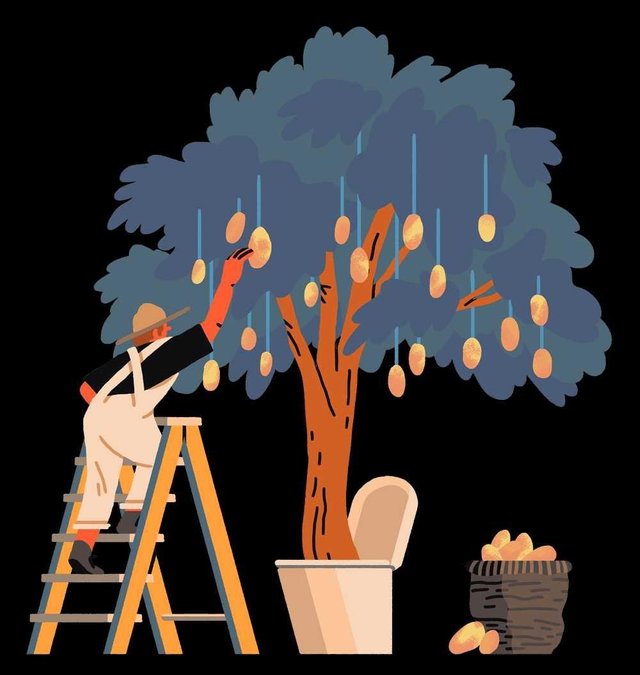
Just like we have realized that food is best produced and consumed locally, we might scale down our waste-processing facilities to mediate what he calls the “redistribution of nutrients on the planet”. When we continuously transport corn from South America, tomatoes from Israel and strawberries from California to other locales, we alter the nutritional balance of those ecosystems. “You’re taking all this biodiversity out of one ecosystem and creating these piles of shit somewhere else,” Waltner-Toews says. And because we don’t ship our poo back to where the food came from, we deplete soils in some places and over-enrich others. So if we’re trying to make growing and eating food a local issue, then why not our poo processing too?
While it’s unlikely that every Western toilet will eventually have a biodigester attached to its bottom, or that little poop-collecting carts will roam the streets of London, Paris or New York, change isn’t impossible. Perhaps some places will be able to have machine-based food and fecal waste collection to feed an anaerobic neighborhood digester that chugs out compost for urban farms.
The push to reinvent our waste processing is happening worldwide, with universities and startups working on alternative approaches. Some are using solar power to run electrochemical reactions to break down waste. Some are converting it to biochar – briquettes that can be burned in stoves to cook food. Others are focusing on improving the existing flush toilet systems by extracting and purifying water, or recycling it back to the toilet for more flushing. Some of these new systems favor an anaerobic approach, others use oxygen, but they all look for alternatives to our existing industrial solutions, which don’t reflect 21st-century needs.
At the end of the site visit I realize that, after several hours of talking toilets, I could really use one myself. Conveniently, there’s a Loowatt nearby. Remembering Razanadrakoto’s talk about broken ropes, I double-check the lever that makes the biofilm seal the waste. The white film moves inside the basin with a faint whoosh and I feel confident to get down to business.
Sitting on a Loowatt loo feels no different to sitting on my toilet at home in New York City – except when I look up there’s no roof, just a man standing in a mango tree, shaking the branches to release the fruit. As with regular toilets, sitting on a Loowatt seems to put you in a pensive mood. It occurs to me that I may be contributing to the man’s next harvest this very moment.
The peach tree in my own backyard would benefit from a similar contribution, I think, but New York’s sanitation system has no way of achieving that. I wonder if my home will ever feature a toilet of the future, capable of converting my waste into a food source for my trees. I pull the lever. Above me, in the mango tree, the man climbs ever higher, reaching for the fruit just beyond his reach.
Hi! I am a robot. I just upvoted you! I found similar content that readers might be interested in:
https://mosaicscience.com/story/poo-toilet-waste-energy-madagascar-loowatt-future/